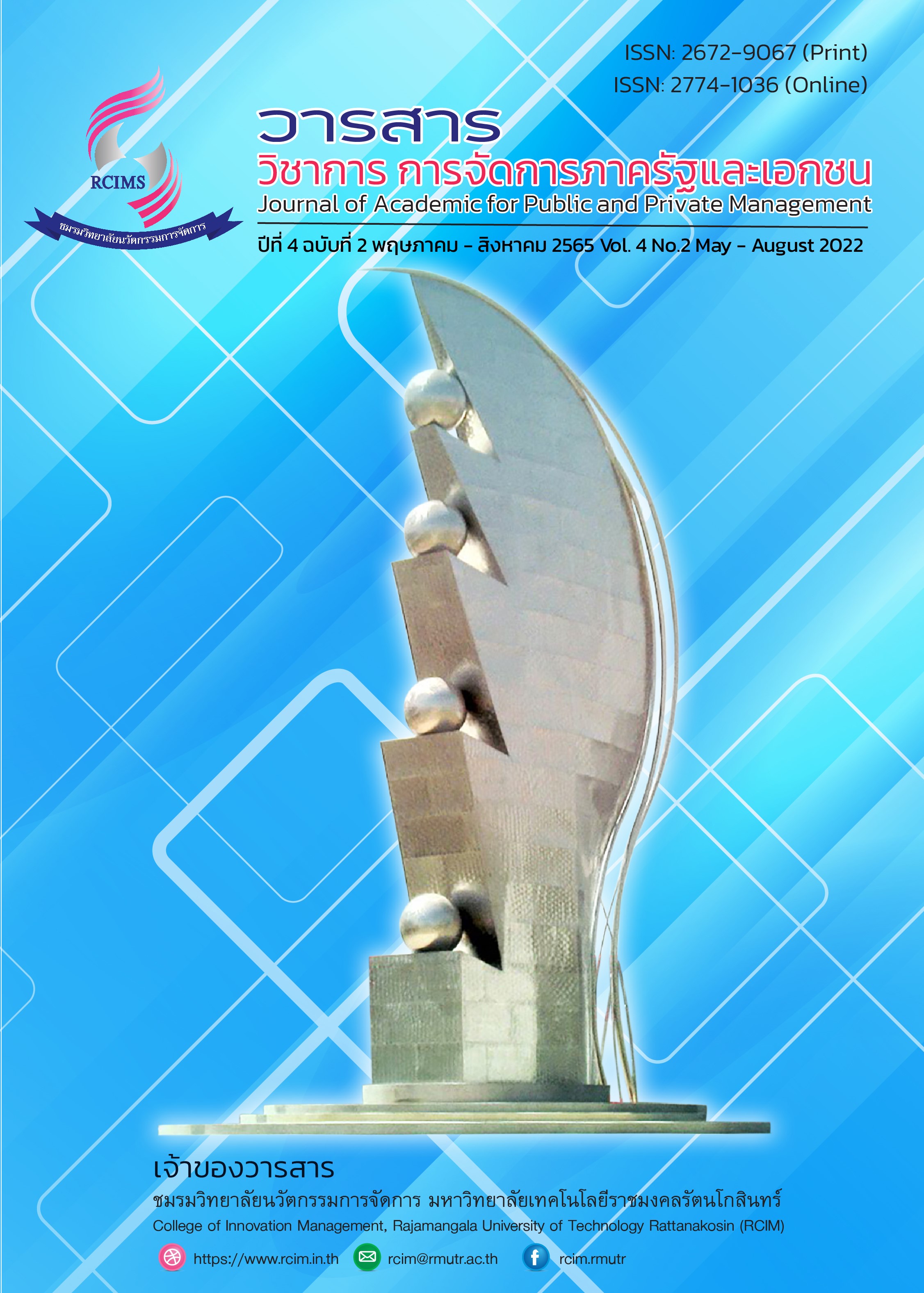โมเดลความสัมพันธ์เชิงสาเหตุของความเป็นสถานศึกษานวัตกรรม
Main Article Content
บทคัดย่อ
บทความนี้มีวัตถุประสงค์เพื่อพัฒนาและตรวจสอบโมเดลความสัมพันธ์เชิงสาเหตุของความเป็นสถานศึกษานวัตกรรม รูปแบบการวิจัยเป็นการวิจัยเชิงปริมาณ ใช้แนวคิดความเป็นสถานศึกษานวัตกรรมเป็นกรอบการวิจัย พื้นที่วิจัย คือ สถานศึกษาระดับขั้นพื้นฐาน สังกัดสำนักงานคณะกรรมการการศึกษาขั้นพื้นฐาน กลุ่มตัวอย่าง จำนวน 435 สถานศึกษา แหล่งข้อมูลเป็นผู้บริหารสถานศึกษาหรือผู้แทนสถานศึกษาละ 1 คน ใช้วิธีคัดเลือกแบบการสุ่มอย่างง่าย เครื่องมือที่ใช้ในการวิจัยเป็นแบบสอบถามความเป็นสถานศึกษานวัตกรรมวิเคราะห์ข้อมูลโดยใช้การวิเคราะห์องค์ประกอบเชิงยืนยัน ผลการวิจัยพบว่า โมเดลความสัมพันธ์เชิงสาเหตุของความเป็นสถานศึกษานวัตกรรมที่ผ่านการตรวจสอบคุณภาพของเครื่องมือด้านความตรงเชิงโครงสร้าง ด้วยการวิเคราะห์องค์ประกอบเชิงยืนยัน ขั้นที่ 1 มีความเหมาะสมพอดีกับข้อมูลเชิงประจักษ์ โดยค่า 2 = 635.28, p = 0.00, GFI = 0.83, AGFI = 0.74, CFI = 0.83,
RMR = 0.031 และ RMSEA = 0.14
Article Details

อนุญาตภายใต้เงื่อนไข Creative Commons Attribution-NonCommercial-NoDerivatives 4.0 International License.
เอกสารอ้างอิง
Bearden, W. O., Sharma, S., & Teel, J. E. (1982). Sample size effects on chi square and other statistics used in evaluating causal models. Journal of Marketing Research, 19(4), 425−430.
Bollen, K.A. (1990). Overall fit in covariance structure models: Two types of sample size effects. Psychological Bulletin, 107(2), 256−259.
Cronbach, L. J. (1951). Coefficient alpha and the internal structure of tests. Psychometrika, 16, 297-334.
Edelson, D. C. (2002). Design research: What we learn when we engage in design. The Journal of the Learning Sciences, 11(1), 105-121.
Fullan, M. (2007). The new meaning of educational change (4th ed.). New York, NY and London, UK: Teachers College Press.
Juuti, K., & Lavonen, J. (2006). Design-based research in science education: One step towards methodology. Nordic Studies in Science Education, 4, 54-68.
Kline, R. B. (2004). Principles and practice of structural equation modeling 2nd ed. New York: Guildford.
Laundy, P. (2006). An Innovation Discipline Model. Retrieved August 10, 2022, from http://www. bpminstitute.org/articles/article/article/an- innovation-discipline-model.html
Likert, Rensis. (1967). The Method of Constructing and Attitude Scale. In Reading in Fishbeic, M (Ed.), Attitude Theory and Measurement. New York: Wiley & Son.
McKeown, M. (2008). The Truth About Innovation. London: Prentice Hall.
NCCBE. (2004). National core curriculum for basic education 2004: national core curriculum for basic education intended for pupils in compulsory education. Helsinki: National Board of Education.
Nielsen, J. (1993). Usability engineering. Boston, MA: Academic Press.
Office of the Education Council (ONEC). (2018). The National Scheme of Education B.E. 2560-2579 (2017-2036). Retrieved August 10, 2022, from https:// edubrights.com/resource/2018/11/27/ the-national-scheme-of education-b-e-2560-2579-2017-2036/
Office of the National Economic and Social Development Council. (2018). National Strategy (2017-2036). Retrieved August 10, 2022, from http://nscr. nesdb.go.th/wp-content/uploads/2019/10/ National-StrategyEng-Final-25-OCT-2019.pdf
Pagaura, A. (2020). Innovative leadership attributes of school admin istrators in the Philippines: Implications for educational man agement. Interdisciplinary Research Review, 15(2),1-7.
Phonmanee, W. and Ariratana, W. (2019). The development of adminis tration model for creating learning management innovations in secondary school under the office of the Basic Education Com mission. Journal of Educational Administration, Khon Kaen Universit, 15(1),36-50.
Reeves, T. (2006). Design-based research from a technology perspective. In J. V. D. Akker, K. Gravemeijer, S. McKenney & N. Nieveen (Eds.), Educational Design-based Research (pp. 52– 66). New York: Routledge.
Rogers, E.M. (2003). Diffusion of innovations (5th ed.). New York: Free Press.
Schreiber, J. B., Nora, A., Stage, F. K., Barlow, E. A., & King, J. (2006). Reporting Structural Equation Modeling and Confirmatory Factor Analysis Results: A Review. Journal of Educational Research, 99, 323-338.
United Nations Educational, Scientific and Cultural Organization (UNESCO). (2014). UNESCO Education Strategy 2014–2021. Retrieved August 10, 2022, from https://unesdoc.unesco.org/ark:/48223/ pf0000231288.


